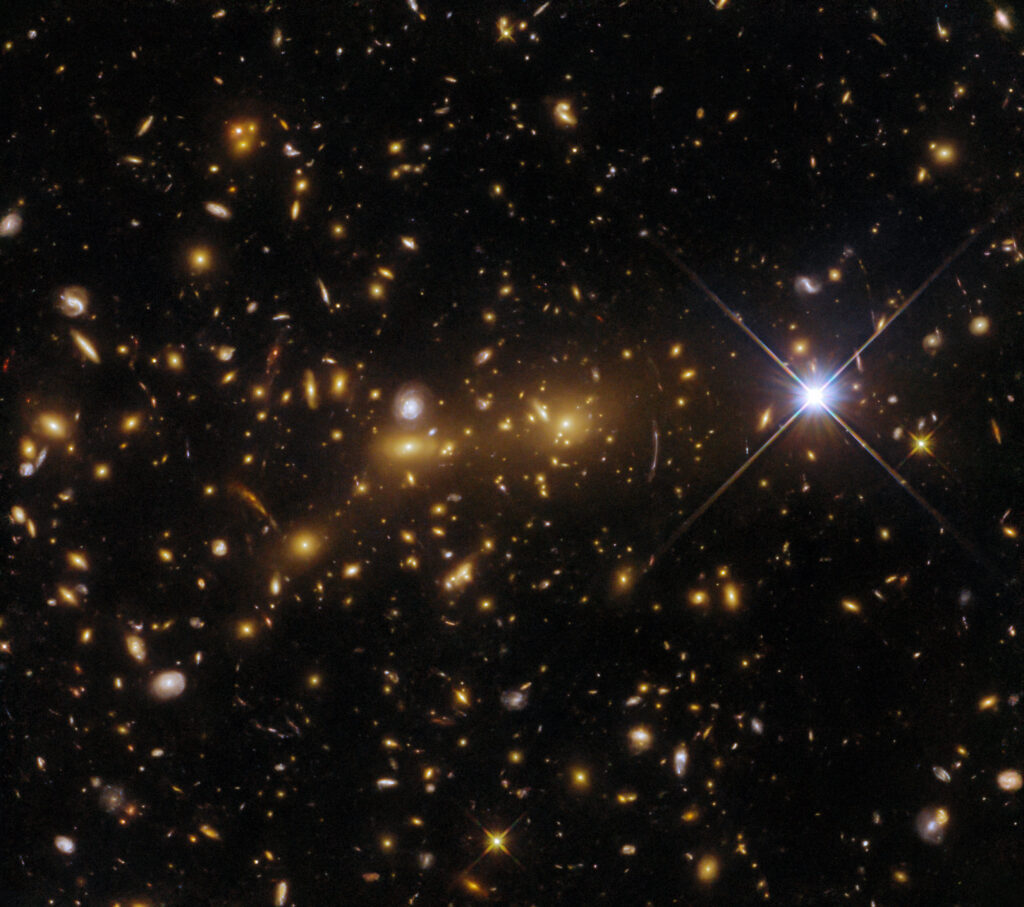The Hubble Mission support team has released a new image. It demonstrates the consequences of the collision of two distant galactic clusters, which led to the formation of the eMACS J1353.7+4329 supercluster.

The picture was taken during a program called Monsters in the Making. Its purpose is multi-wave observations of five galaxy clusters. They are conducted using the WFC3 and ACS cameras installed on the Hubble telescope.
The cluster eMACS J1353.7+4329 is located at a distance of 8 billion light-years from Earth in the direction of the constellation Canes Venatici. It was formed as a result of the merger of two smaller clusters of elliptical galaxies. In the Hubble image, they are visible as groups of oval orange-colored objects arranged around a bright core. You can also pay attention to two thin arcs located to the right of the largest galaxy of the cluster. This is a manifestation of the phenomenon known as the gravitational lens.
A gravitational lens occurs when a sufficiently massive object is located on the line between the Earth and the background body. In this case, its gravity can distort space-time, as a result of which the path of light rays around the object will be distorted, as if it passes through a huge lens.
Astronomers actively use gravitational lenses. They amplify light, making it possible to observe distant objects that cannot be seen even with the most powerful telescopes. In addition, gravitational lenses can also “duplicate” images, creating various bizarre optical phenomena like Einstein’s cross.
According to https://esahubble.org
Follow us on Twitter to get the most interesting space news in time
https://twitter.com/ust_magazine

